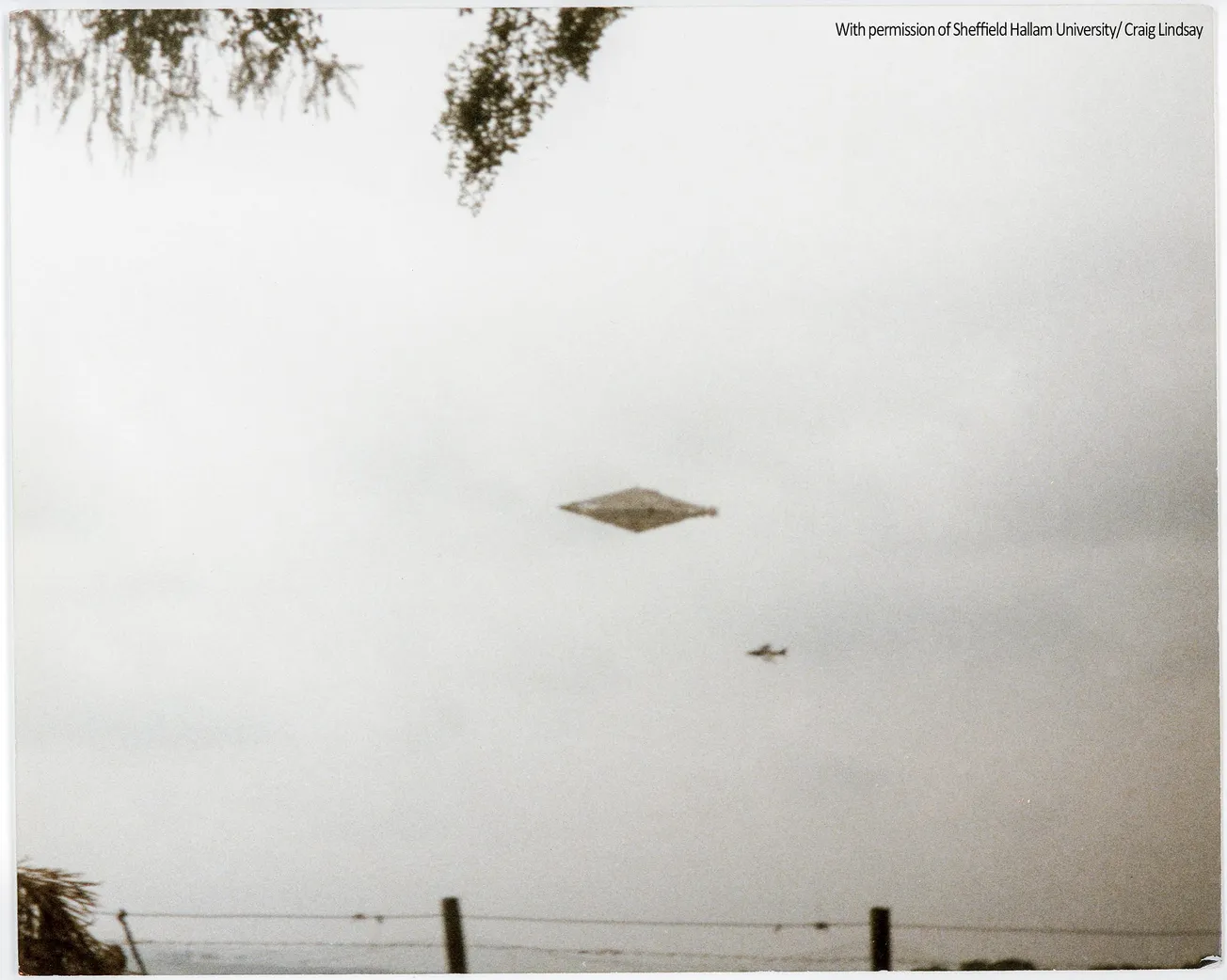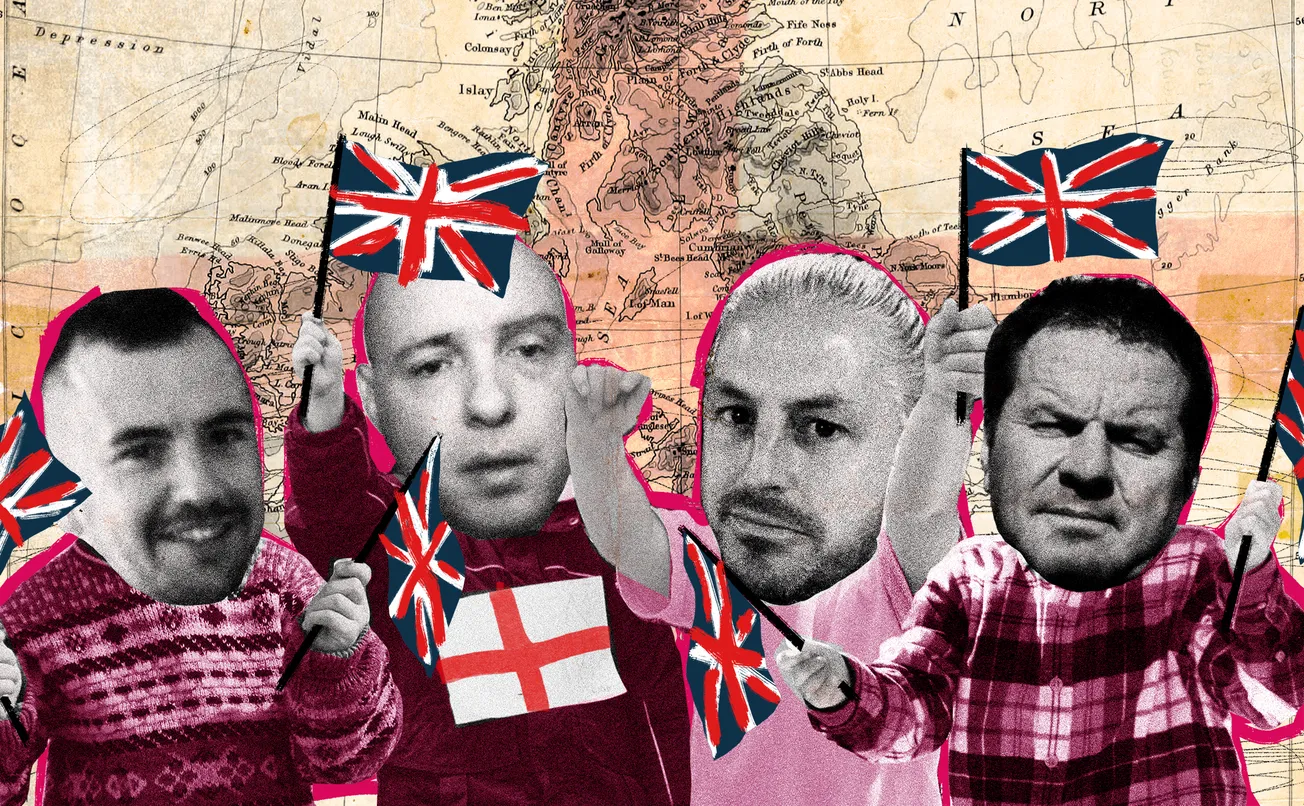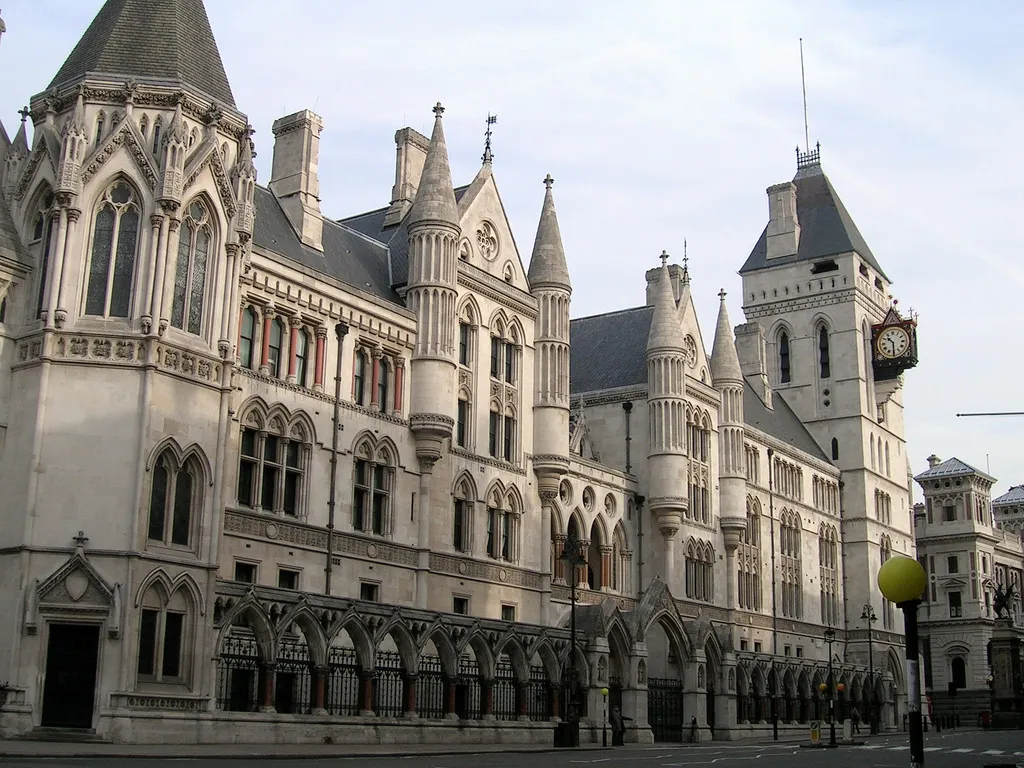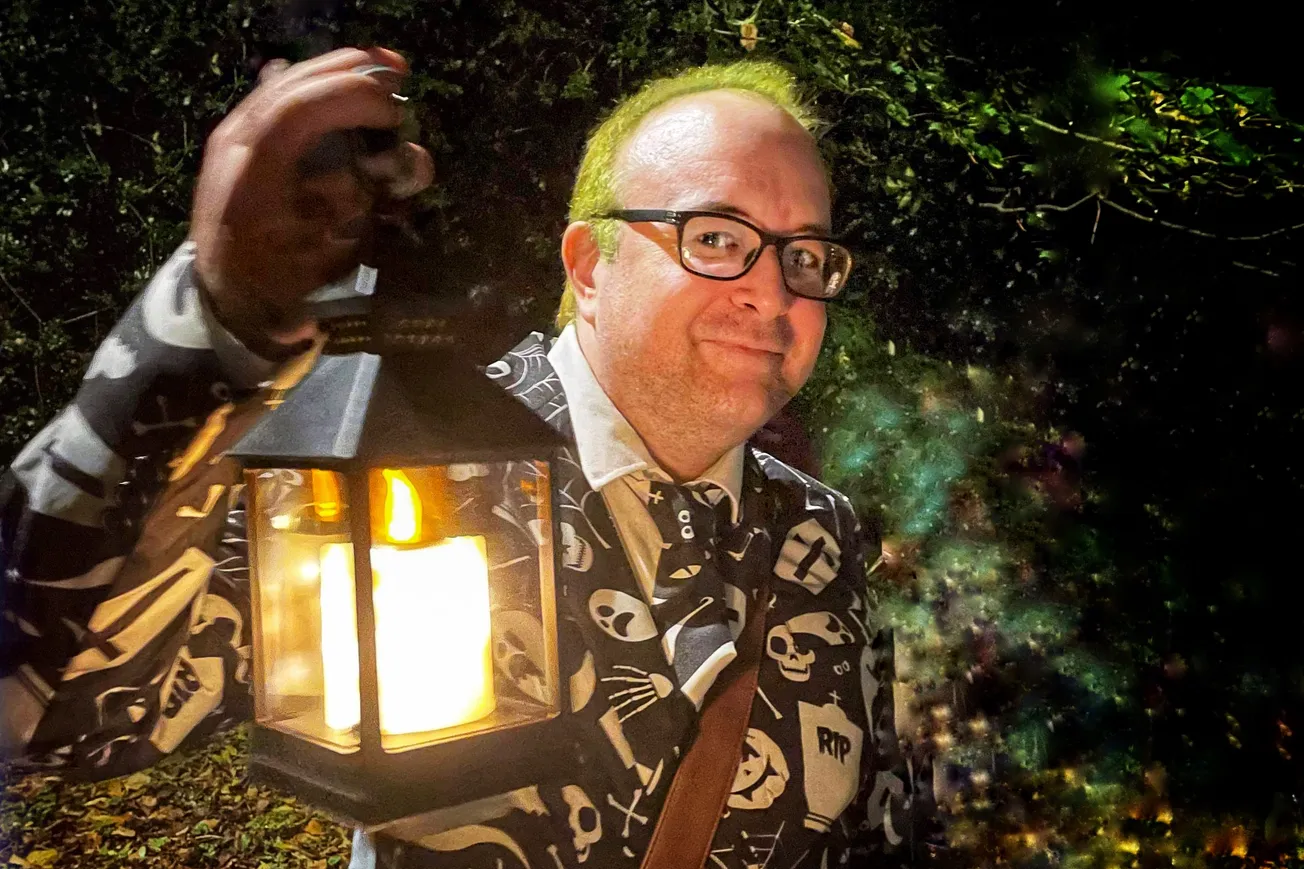By Harry Shukman
The photograph had eluded Dr David Clarke for 26 years, and here, finally, it was in his hands. The buzz he felt was so powerful that even now, as he recounts the moment, words briefly fail him.
“It was,” explains Clarke, “almost like finding the Holy Grail of this subject.”

The photo is perhaps the clearest image ever captured of a UFO, or unidentified flying object. It was taken in 1990 and shows a grey sky in the Scottish Highlands — foliage at the top, fencing at the bottom — and two objects in the air. One looks like a Harrier jet plane, the kind used by the RAF. The other is…something very different. It's the shape of a flat diamond, grey but with daubs of white and black. It looks much, much bigger than the jet.
Clarke is not an eccentric UFO nut who believes senior politicians have been abducted by aliens and injected with microchips. He is an academic at Sheffield Hallam, specialising in journalism and media law. And he never expected to see this photo. For years, as part of his research into contemporary legends, he had been sending information requests to the Ministry of Defence (MoD), tracking down former military intelligence officers, and spending countless hours hunched over government archives to uncover evidence of unidentified flying objects. This snap, taken in Calvine on the edge of the Cairngorms, had eluded him for a quarter-century. And now he had it.
He first read about Calvine in a UFO book in 1996 — a couple of sentences mentioning an incident in the Highlands — but it wasn’t until 2009 when Clarke was working at the National Archives curating declassified MoD files that he came across an odd drawing. It was a bad sketch by any measure — like a biro doodle from the back of a school textbook — but it showed a jet flying next to a UFO. This appeared to be a depiction of the Calvine incident. In the same archive was a defence briefing dated from Margaret Thatcher's government, advising how to dismiss unwanted press questions about Calvine.
Clarke’s interest was piqued, but his enquiries about the incident were rebuffed by government departments. The identities of the camera operator and the intelligence officers handling the incident were meant to be kept secret until 2076 due to privacy concerns. Without any more evidence Clarke had come to think, by 2021, that the Calvine incident may have been a hoax.

Until this summer, when he happened upon a “lucky break”. A professional investigator, Clarke protects his sources, but says he was put in touch with a retired RAF officer called Craig Lindsay who investigated Calvine. Clarke went to Lindsay’s home in Scotland. There, the former RAF man took a copy of Great Aircraft Of The World out of his desk, plucked an envelope hidden within its pages, and showed him this incredible photograph and told Clarke the story he had been waiting most of his adult life to hear.
Back in 1990, Lindsay had been tasked with interviewing two young chefs, who had been “utterly changed” by a weird experience in the Highlands. On the night of August 4th, these two men had finished a shift in the kitchens of a Pitlochry hotel and went for a hike in nearby Calvine. It was around 9pm — still light — when they saw something that made them dive into the bushes. Hovering silently in the sky above them was a craft roughly 100 feet long and shaped like a diamond. A jet plane zoomed by, circling the diamond craft, before shooting off on its way. The duo, who had a camera with them, took six photographs of this eerie scene. After ten minutes of hovering, the diamond ascended quickly into the sky.
Clarke credits Steven Spielberg for his interest in UFOs. It was the 1977 movie Close Encounters of the Third Kind, with Richard Dreyfuss doggedly investigating extraterrestrial life, that hooked him. He began his career as a journalist at the Sheffield Star before finding his way into UFOlogy, writing a dozen books on the subject, including How UFOs Conquered the World: The History of a Modern Myth and The UFO Files: The Inside Story of Real-Life Sightings. His books are well-reviewed, but not always popular with UFO enthusiasts, since they tend to chart his own journey from believer to sceptic (alongside documenting changing cultural attitudes to UFOs). He is now the co-founder of the Contemporary Legend research group at Sheffield Hallam.
“I haven’t been able to get away from it,” Clarke says, describing his career investigating UFO sightings. “I’ve thought that’s it, I’ve done everything I possibly can, and then something else comes along. [Calvine] is the perfect example. It’s just good to have found that photograph. To me, it’s a really important artefact.”

In his book The UFO Files, Clarke delves into public reactions over the last century to strange sightings in the sky. Interestingly, these sightings seem to surge during times of social uncertainty (such as the two world wars, the Cold War) and after the release of alien shows like The X-Files. The British public go through phases of obsession with UFOs.
But how did the public get hooked in the first place? UFOlogy got off to a flying start in 1947. According to a BBC article on the subject, commercial pilot Kenneth Arnold claimed in June of that year that he had seen nine “flying discs” in Washington state moving at 1,200mph — something which was reported to the Associated Press news service, and was broadcast further by Hearst International shortly afterwards. “The story spread around the globe considerably faster than 1,200 mph. Soon there were hundreds of other reported sightings.” Clarke quotes a Sheffield woman, during the flying saucer craze of 1947, writing in her diary about her husband’s new mania. Her exasperation is palpable:
“Husband much keyed up about the flying saucers over American skies. One of his pet subjects. Papers can’t report enough about them to satisfy him. Just like a small boy about it.”

Sheffield has a rich history of UFO sightings, which will feature in a new Contemporary Legend archive at Sheffield Hallam. Two incidents stand out in particular. In 1962, a 14-year-old boy named Alex Birch took a picture that appeared to show a fleet of flying saucers over the city. It was published in the News of the World but dismissed by the Air Ministry as sunlight reflecting ice crystals in the smoky air. “This conclusion satisfied no one,” Clarke writes in The UFO Files.
Another occurred in 1968, when an off-duty constable called Martyn Johnson and his girlfriend spotted two multicoloured lights approaching them in High Hazels Park — “they were very, very soft and didn’t throw beams like a torch”, PC Johnson recalled — before splitting into four lights and zipping off along the railway towards Rotherham. Soon after this experience, Johnson was summoned to Sheffield Police Headquarters and quizzed by two men from “a government investigation department in London”, conspicuously dressed in trench coats and trilby hats. According to PC Johnson’s ever-so slightly hammy account (“if the people of the world knew how many genuine sightings there were like yours, there would be total panic,” he reports the men telling him), they swore him to secrecy.
Unlike Johnson, the two chefs in Scotland did not want to remain quiet. They decided to send their pictures into the Daily Record newspaper. Curiously, it never printed them. Clarke suggests that the paper’s editors alerted the government, which in turn pressured the Record not to print the photos due to national security concerns. Lindsay collected the photos from the newspaper, faxed a copy to the MoD’s offices in London, but kept the print. It stayed there, in the same envelope in Lindsay’s desk at home for more than three decades. Until Clarke showed up. “I have been waiting for someone to contact me about this for more than 30 years,” Lindsay told him.
According to another source of Clarke’s, the two chefs were out poaching in the Highlands and were posing with a deer they killed when they spotted the Calvine craft. This might explain why, after so long, neither of them has spoken about their experience. “I think they were up to no good,” Clarke explains, suggesting that the MoD struck a deal with the youngsters: the officials would not alert the police about their poaching in exchange for the chefs’ silence.

Silence about what, though? To dispel the most tantalising theory — it’s almost certainly not aliens. Clarke says that 95%, or even 99% of UFO encounters can be explained without needing to get little green men involved. In his book, The UFO Files, he describes case after case in which conventional aircraft, weather balloons, satellites, or rare types of lightning (like the kind captured in this video) were mistaken for alien spaceships. The remaining 1% of cases, it would seem, are simply yet to be understood. While it is thrilling to imagine that tiny percentage is proof of extraterrestrial technology, Clarke does not believe that aliens have ever come to Earth. He is, however, open to the idea that they may be out there…
So back to Calvine. Clarke puts forward a convincing argument for what happened there. The UFO sighting’s date is significant: still in the Cold War, just two days after the Gulf War broke out. A time of military paranoia and secrecy. Could the US military, which had airbases in rural areas of Scotland, have been testing one of its so-called “black projects”, a highly-classified type of aircraft?
It has never been confirmed, but in the late 1980s, the US was rumoured to be developing the Aurora plane, a speedy, silent aircraft that could spy on its enemies. If the Aurora was being tested in a remote part of the Scottish Highlands, what were the odds that two chefs out poaching venison late one night would have stumbled onto this top-secret machine?
The truth is out there, somewhere in the bowels of the MoD. And if anyone’s going to find it, it’ll be David Clarke.
Check out David’s blog here.
Comments
How to comment:
If you are already a member,
click here to sign in
and leave a comment.
If you aren't a member,
sign up here
to be able to leave a comment.
To add your photo, click here to create a profile on Gravatar.







